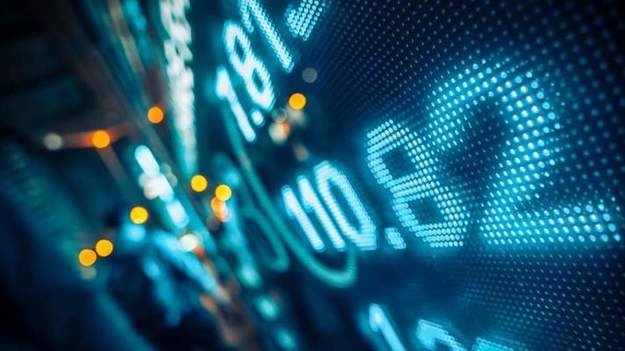Fibonacci Percentages
Contents

The golden ratio and the Fibonacci sequence give birth to the golden spiral– a logarithmic spiral that grows outward by a factor equivalent to the golden ratio. Essentially, the golden spiral gets wider by a factor of φ for every quarter turn it makes. 61.8% and 161.8% might be the most important Fibonacci ratios of them all. Also known as the golden ratios, they appear frequently across maths, geometry, architecture, art and more. To find the 61.8% ratio, all you have to do is divide each number in the Fib sequence by the one that follows it. Do this along the chain, and you’ll quickly spot that it comes out at roughly 0.618 each time – particularly from 21 ÷ 34 onwards.

In contrast, you could earn a much bigger price if the price indeed carried on with its existing trend. These levels are actually inflection points where prices either reverse or break key levels. In contrast, variable indicators change with the different time frames and can give you conflicting results. Additionally, Fibonacci levels show support levels that may not otherwise be visible on a chart. Support levels are generally based off of historical trading activity, whereas Fibonacci levels are based off of a unique calculation that may allude to future trading activity.
Unless otherwise indicated, all data is delayed by 15 minutes. The information provided by StockCharts.com, Inc. is not investment advice. Shallow retracements occur, but catching these requires a closer watch and quicker trigger finger. Focus will be on moderate retracements (38.2-50%) and golden retracements (61.8%).
What are Fibonacci Retracements?
Some of the criticism surrounding the reliability of Fibonacci levels is no doubt related to lack of technique. Before we can understand why these ratios were chosen, let’s review the Fibonacci number series. Market trends are more accurately identified when other analysis tools are used with the Fibonacci approach. Although most trading platforms can make these calculations automatically, but it’s still good to understand how you can do this on your own. You should consider whether you understand how ᏟᖴᎠs work and whether you can afford to take the high risk of losing your money. For more strategies based upon the Fibonacci indicator, head over to our article on Fibonacci extensions.
- Traders found that trends tend to retrace prior moves according to these same ratios, which in percentages come to 23.6 percent, 38.2 percent, 50 percent, 61.8 percent of a given trend.
- By plotting Fibonacci ratios such as 61.8%, 38.2% and 23.6% on a chart, traders may identify possible retracement levels and enter potential trading positions.
- In fact, it will often retrace to a Fibonacci retracement level, which can indicate an entry or exit point in the direction of the original trend.
- Some argue that the 50% ratio is a ‘Gann ratio’, created by W.D Gann in the early 1900s.
They are the ratios of an element anto its preceding elements an-1, an-2, and an-3. Sterling has surprised with decent data but the overall outlook for the sterling fundamentally remains the same, the market is expecting one more rate hike. The strong data however is creating a very RANGY environment for this pair. We saw this when the last bearish move was RETESTED all the way to the 68 fib zone. Allows to configure a drawing to be displayed on particular intraday and daily timeframes on chart.
Why do traders use Fibonacci retracements?
The ratios form the support or resistance levels in Fibonacci Retracement analysis. The important levels are 61.8% (an-1 / an), 38.2% (an-2/ an), and 23.6% (an-3/ an). There are other important levels like 78.6% and 50%, which are not Fibonacci ratios but are nonetheless important.
Those Fibonacci levels don’t provide any useful information about the relative sizes of the two rallies. Unfortunately, many Elliott Wave traders never think to ask themselves this important question. Most folks tend to simply rely on the Fibonacci extensions on their charting platform to compare wave 3 to waves 1 and 5. Often, however, they are relying on false or misleading information.
Some traders also mistakenly believe that switching a chart to log scale actually changes the relative sizes of price moves. This leads them to expect to see a different set of Fibonacci levels when a chart is in log scale. So, some platforms give you the option to use different calculations to display a different set of Fib levels when your chart is in log scale. This can lead to a scenario where sometimes rally A is shorter than rally B, but sometimes it’s not, depending on how you configure your chart. Fibonacci retracements are ratios that allow traders to identify potential reversal levels. In this context, the Fibonacci retracement tool may provide insights into potential resistance levels if the market starts to move up.
Even the strongest up trending stocks will experience pullbacks, especially on its smaller time frames. Fibonacci retracements are a price indicator used to help traders anticipate the potential price levels where the pullbacks will find support. The retracements reveal potential areas of support and resistance ahead of time. These levels may otherwise not be visible on a chart utilizing other price indicators.
Fibonacci Ratio methods is mainly used to determine the medium and long term support and resistance. However, it is also used to determine the support and resistance of short-term movements. As you can imagine, this knowledge can turn out to be very useful in trading.
And, specifically on Wave , it’s possible to take those ratios and add 100%, 200% and on occasions 300% and 400%. OnFibonacci Ratios and the Square Root of Two Part I, we talked about the history behind the Fibonacci sequence and how ratios were computed. On part two, we are going to describe how Fibonacci and sqrt-2 ratios show up in the Elliott Wave structure.
Traders believe the Fibonacci series has its application in stock charts as it identified potential retracement levels. You can use the Fibonacci retracements to uncover support and resistance levels which can be used as targets to either stop out of a position or take profit on a trade. Fibonacci retracement lines are typically employed as part of trend-trading strategies. For example, suppose the market is experiencing a pullback within a prevailing trend. In that case, you can take advantage of the levels set by Fibonacci and place your trade in the direction of the underlying trend.
What Are Fibonacci Retracement Levels, and What Do They Tell You?
The market did try to rally, and stalled below the 38.2% level for a bit before testing the 50.0% level. The Elliott Wave Theory (“EWT”) is named after Ralph Nelson Elliott and is a method of technical analysis based on crowd psychology. Then a number of horizontal lines are drawn perpendicular to the imaginary vertical at significant Fibonacci values. This can vary significantly depending on each trader’s setup, strategy, and trading style. Typically, the tool is drawn by picking two extreme points within the price range, such as a high and a low.
Because of all the people who use the Fibonacci tool, those levels become self-fulfilling support and resistance levels. Fibonacci extensions (or “Fib extensions”) are used to determine price targets after the prevailing trend has resumed. However, as with all technical indicators, the relationship between price action, chart patterns, and indicators are NOT based on any scientific principle or physical law. Determine significant support and resistance levels with the help of pivot points. Additionally, you can use these target levels as confirmation indicators used in conjunction with other technical indicators such as moving averages, stochastics, and momentum.
https://forexarticles.net/ occasionally reach out to us if they notice that the Fibonacci levels displayed in WaveBasis are different than what they see on another platform. The example chart below is an actual chart from another platform that was sent by one of our customers to show us what he had noticed. So, to be sure that wave 3 is not shorter than wave 1, for example, wave 3 must represent a larger percentage change in price than wave 1.

You can see in the chart of the S&P 500 index that the Fibonacci Retracement levels act like magnets creating a self-fulfilling prophecy. The 38.2% Fibonacci ratio and the 61.8% Fibonacci ratio are calculated by subtracting the recent high from the recent low and targeting the impending rebound. Most of these points are calculated by your charting software. This Italian mathematician uncovered a ratio within a sequence of numbers that follows a pattern.
The Fibonacci Retracements
Fibonacci retracement levels provide traders with interesting insights into the price action. The retracement levels plotted on the price charts help them understand the possible pullbacks or retracements during a trend. Traders can use it to find entry points, exit points, stop-loss levels, and take profit levels. These are then applied to the chart to try and figure out potential hidden levels of support or resistance in the market.
The https://forex-world.net/ in these numbers, when computed further, gives a percentage called Fibonacci percentage. This time each number is divided by its succeeding numbers at first, second, and third positions. These Fibonacci trading percentages are used in the stock markets to predict support and resistance levels for the existing trend. ‘The retracement level forecast’ is a technique that can identify upto which level retracement can happen. These retracement levels provide a good opportunity for the traders to enter new positions in the trend direction.
Fibonacci clusters are areas of potential support and resistance based on multiple Fibonacci retracements or extensions converging on one price. Cory is an expert on stock, forex and futures price action trading strategies. Fibonacci ratios are one of the most powerful and easiest trading tools in your investor’s toolbox. It provides excellent guidance for when a trend will end and reverse course. However, like any good trading tool, don’t use it alone to make your trading decisions.
If the price starts rallying and goes to $20, that is an extension. The Fibonacci levels applied in Chart A using the standard method creates targets that would appear to be completely unreliable. However, applying the tool at the secondary high as the starting point on the same chart – as in Chart B – reveals a pattern that honors Fibonacci levels more accurately.
Advanced technical analysis
As a general rule, the more confirming factors, the stronger the trade signal. We can create Fibonacci retracements by taking a peak and trough on a chart and dividing the vertical distance by the above key Fibonacci ratios. Once these trading patterns are identified, horizontal lines can be drawn and then used to identify possible support and resistance levels. Fibonacci retracement levels often mark retracement reversal points with surprising accuracy. The retracement levels are a powerful tool that can be applied to all timeframes, including day trading and long-term investing. Fibonacci numbers also play a crucial role in the Elliott Wave principle, a technical analysis tool used to identify market cycles.
A strong https://bigbostrade.com/ signal is one that is confirmed by more than one indicator. When using Fibonacci retracement levels to identify support, we are attempting to predict where the price may retrace to after moving up. In other words, we’re identifying where the price might land after it has reached a peak and started declining. The Fibonacci sequence and golden ratio appear frequently in nature, biology, architecture, and fine art.


